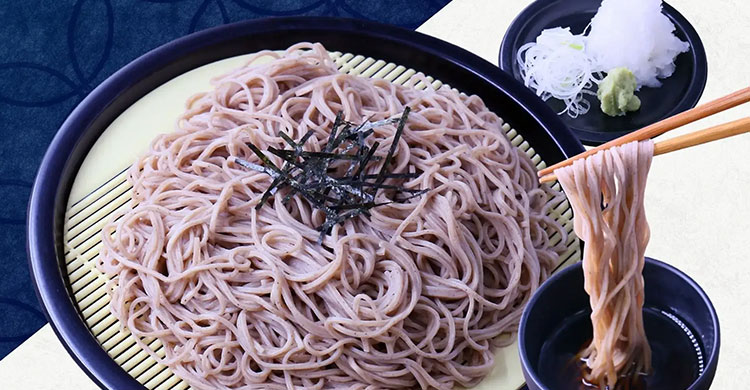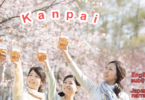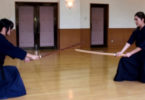Friendly, reasonable price and tasty…”Soba” (buckwheat noodle) are one of the most representative alimentary pastes along with “Udon” and “Ramen” in Japan.
Hi everyone how are you doing? I’d like to talk about Soba which is the best “Cool Japan” noodle food after enjoyed Japanese Sake in particular.
It is not only me, but it has been eaten nationwide as well as overseas, especially for lunch or at parties, or on every casual occasions.
In addition, in recent years, there’s been a boom in home-made noodles. Soba-making classes held all over Japan attract many students.
Contents
What’s Soba (buckwheat noodle) and its kind ?
It is noodles made of buckwheat flour, roughly as thick as spaghetti, and prepared in various hot and cold dishes.
Buckwheat noodles are served in many different ways.
This is a type of buckwheat noodle which is eaten cold, with a dipping sauce. Wasabi (horseradish) and finely chpped Japanese onions are often served as condiments.
Alternatively, it can be eaten hot. In many cases, it’s served in a soup made by mixing broth with the rich dipping sauce used for cold soba. Varying the toppings opens up numerous possibilities.
The most basic kind of chilled/cold soba called Mori/Zaru Soba served on a tray with a simple chilled dipping sauce (tsuyu) served on the side.
The dipping sauce is usually a mixture of soup stock, water and mirin.
There are historical differences between Zaru and Mori soba. However in recent times, one major difference between the two is zaru soba(right one) has nori (seaweed) on top of the noodles while mori soba(left one) does not.

Zaru soba (left), Mori soba (right)
Kake Soba (hot) served in a bowl of hot, clear broth. The broth is made of the same components as the dipping sauce for the chilled soba, but in a lower concentration.

Kake soba
This is called kitsune Soba, or “fox” soba. According to Japanese folklore, foxes love deep-fried tofu (aburaage), and that’s how this dish topped with deep-fried tofu got its name, or so it’s said.

Kitsune soba
This is tanuki (raccoon dog) soba, which usually features bits of deep-fried tempura batter.

Tanuki soba
This is called tusukimi(moon-viewing) Soba because the egg yolk resembles the moon.

Tsukimi soba
And this is Tempura Soba comes with a serving of tempura either on the side or on top of the noodles. There are usually three to five different kinds of tempura pieces, and the ingredients varies from shop to shop. The noodles are served either on a tray (as on the photo) or in a soup.

Tempura soba
Tororo Soba is a white, sticky, paste-like cream made of grated raw nagaimo (yam). It is usually placed on top of the soba noodles or served on the side to be added to the noodles by the guest.

Tororo soba
Sansai Soba is served with cooked sansai (wild vegetables) placed on top of the noodles in the broth.

Sansai soba
Curry Nanban Soba usually refers to broth that has leek added to it. Most times, curry nanban noodle has curry and either chicken or duck in the broth.

Curry Nanban soba
Varieties and types of Soba
Buckwheat is ready for harvest in three months, allowing four crops a year, mainly in spring, summer, and autumn.
In Japan, buckwheat is produced mainly in Hokkaido. Soba that is made with newly harvested buckwheat is called “shin-soba”. It is sweeter and more flavorful than regular soba.
Nagano Prefecture is famous for buckwheat noodles. The noodles are known as Shinshu Soba. One of the reasons for this popularity is that Nagano has natural features well-suited to buckwheat production.
The land has plenty of volcanic ash soil because of its highland location. It also has an extreme difference in temperatures. Many famous buckwheat production centers can be found across the prefecture, from the Kurohime and Togakushi highlands in the north to the Kaida highlands in the south, and the prefecture boasts the second-highest production of buckwheat noodles in Japan.
Many facilities are also engaged in integrated noodle manufacturing, from cultivation to milling and cutting. Many of these facilities provide noodle cutting courses for customers, forming one of the major leisure activities of Nagano.
Buckwheat noodles are produced by mixing buckwheat flour with some wheat flour (to reduce brittleness), adding water, mixing, kneading, rolling and cutting. As a general rule, only noodles containing 40% or more buckwheat flour can carry the Shinshu name.
By location
Etanbetsu soba: named after the central region of Hokkaidō (Asahikawacity)
Izumo soba: named after Izumo in Shimane
Izushi soba: named after Izushi in Hyōgo
Shinshu (or Shinano) soba: named after the old name of Nagano Prefecture
Okinawa soba: In Okinawa, soba usually refers to Okinawa soba, a completely different dish of noodles made out of flour, not buckwheat. Okinawa soba is also quite popular in the city of Campo Grande (Brazil), due to influence of Japanese (Okinawan) immigrants. It is eaten at street markets or in special restaurants called “sobarias”.
By ingredients
Cha soba: flavored with green tea powder]
Hegi soba: flavored with seaweed
Inaka soba: “country soba”, thick soba made with whole buckwheat
Jinenjo soba: flavored with wild yam flour
Mugi soba: flavored with mugwort
Ni-hachi soba: soba containing 20% wheat and 80% buckwheat
Sarashina soba: thin, light-colored soba, made with refined buckwheat
Towari soba or Juwari soba: 100% buckwheat soba
What’s noise during eating soba with relish?
When you eat soba, this is the way to do it..slurping sound. That noise “zuru zuru・・・” ! Soba should be slurped up with gusto, noisily.
Noodles served in a soup (usually the hot ones) are enjoyed by using your chopsticks to lead the noodles into your mouth while making a slurping sound. The slurping enhances the flavors and helps cool down the hot noodles as they enter your mouth.
Slurping draws in plenty of air laden with the smell of the buckwheat. This courses through the nose, amplifying the aroma.
The broth is drunk directly from the bowl, eliminating the need for a spoon. It is not considered rude to leave some unfinished soup in the bowl at the end of the meal.
For soba that are served with a dipping sauce (usually the cold ones), there are a few more steps before you can enjoy them. First, mix some of the green onions and wasabi into the dipping sauce. Then take a few strands of soba noodles and dip them into the sauce before eating them.
If your buckwheat noodles were served with a dipping sauce, some soba restaurants will give you a little teapot (see photo to the below) towards the end of the meal that is filled with what looks like hot cloudy water.
This is sobayu, the water that the soba noodles were cooked in. Sobayu is meant to be poured into your remaining dipping sauce after you have finished your noodles. This is how you can finish your dipping sauce by drinking this mixture and adjusting the amount of sobayu as you prefer.
Nutrition of Sobayu
Along with having a component called lutin is a soba-specific polyphenol, the content of high quality proteins and essential amino acids is also high, their components are included well balanced.
In particular lutin, since there is a function to suppress the increase in blood pressure to increase the elasticity of capillaries and arteries in particular in the component that is said to be effective in the prevention of lifestyle-related diseases, hypertension prevention effect and antioxidant effect, blood flow improvement effect is expected.
In addition, vitamin B is abundant, and it is said that choline, which is one of them, is effective in preventing fat accumulation in the liver, and vitamin B1 is a fatigue-relieving vitamin because it has the effect of eliminating physical strength, irritability, and anorexia.
Vitamin B2 works to keep the skin and mucous membranes healthy, and it is said that the side effects including these are numerous Vitamin B2 works to keep the skin and mucous membranes healthy, and it is said that the side effects including these are numerous.
Other uses of the word soba
It is also the Japanese word for buckwheat. Roasted buckwheat kernels may be made into a grain tea called sobacha, which may be served hot or cold.
Buckwheat hulls, or sobakawa (also called sobagara), are used to fill pillows. Sometimes, beers are made with roasted buckwheat added as a flavoring, and called “soba ale”.
It is occasionally used to refer to noodles in general. In Japan, ramen is traditionally called chūka soba or before the end of the Second World War, shina soba.
Both of these mean “Chinese noodles”, though the word china was replaced by chūka because the Chinese considered the former term offensive.
Parboiled chūka soba is stir-fried to make Yakisoba.
The name Ramen is the Japanese pronunciation of the Chinese lamian. Note that these noodles do not contain buckwheat. In this context, ‘soba’ noodles proper are called Nihon soba (Japanese soba) as opposed to chūka soba.
Soba’s history
The cultivation of buckwheat in Japan dates back over 1,000 years.
The photo below is buckwheat plantation.

Groats

In the old days, farmers had to submit rice as a levy to the ruler. In upland areas, however, rice production was low, whereas buckwheat was relativelyy easy to grow.
So buckwheat became important to farming families both as an alternative crop to pay taxes and as a souce of nutrition.
Nutritional value of soba
100 grams of cooked soba yields 99 kcal (410 kJ) of energy. Soba contains all eight essential amino acids, including lysine, which is lacking in wheat.
It contains a type of polysaccharide that is easily digested. Soba noodles also contain antioxidants, including rutin and quercetin, and essential nutrients including choline, thiamine (Vitamin1) and riboflavin.
In Japan, there’s a custom of eating soba on New Year’s Eve, known as tsukikoshi-soba. The long, thin noodles are considered auspicious. by eating them , people with for longevity and good fortune for theri families.
Soba noodles are more than just a deeply ingrained part of Japanese food culture, they are also regarded as a special kind of food imbued with people’s wishes.
Where to eat Soba?
Soba is easily available nationwide at specialized soba restaurants which often also have udon noodles on their menu.
But soba dishes are also a common menu item at eateries around tourist spots, family restaurants or izakaya. The dining out section explains what to expect inside a sit-down restaurant in Japan.
At some busy train stations, standing soba restaurants can be found for a quick meal between train rides.
Ordering at standing restaurants is as simple as buying your meal ticket from the vending machine, giving it to the staff and enjoying your noodles while standing at the counter.
Simple soba noodle dishes typically cost between 500 yen and 1000 yen, while more elaborate dishes or special soba meal sets are usually priced from 1000 yen to 1500 yen.

A typical standing soba shop at a train station
Distinctive regional Soba Dishes
While soba can be easily found all over Japan, soba tends to be more popular in rural areas, and especially in regions where the soil is suitable for growing buckwheat.
Soba produced in some regions are more famous than others. Nagano Prefecture and Yamagata Prefecture, for example, are well-known for their soba.
★ Wanko Soba
Eating Wanko Soba is an experience in itself. Each serving contains roughly a mouthful of soba noodles, and the server will constantly keep topping up your empty bowl with more noodles until you indicate that you have had enough.
The first bowl is eaten plain to taste the flavour, and toppings can be added from the second bowl.
The average for women is about 30-40 bowls, while men average about 50-60 bowls.

★ Ita Soba
Ita Soba is a specialty of Yamagata Prefecture. The noodles are cut slightly larger in width compared to average soba noodles, reminiscent of soba noodles made in the countryside.
Ita Soba is served on large boards (ita). As unpolished soba flour is used, the texture and the smell of buckwheat is stronger.
★ Matcha Soba (Green Tea Soba)
★ Nishin Soba
Nishin Soba is so named for the preserved pacific herring (nishin) that is placed on top of the noodles in hot broth.
Nishin is prepared by first drying, then being braised in a sweet sauce.
★ Izumo Soba
In Izumo, the hull of the buckwheat seed is used in making buckwheat flour. The result is soba noodles that are darker and have a stronger buckwheat smell than the average soba noodles.
Izumo soba is usually served in a three-tier serving bowl together with a variety of toppings.
It is eaten by first adding some toppings and dipping sauce into the first layer, then pouring the leftover to the next layer and adding more fresh toppings and dipping sauce, etc.

★ Okinawa Soba
While called soba, Okinawa Soba are not made with buckwheat flour but with wheat flour. Their texture is more of a cross between ramen and udon noodles.
Okinawa Soba are usually served in a hot pork broth with slices of simmered pork, green onions and pickled ginger.
At the end, please visit both “Udon” and “Ramen“,both of which are indispensable foods in Japan, thanks
















